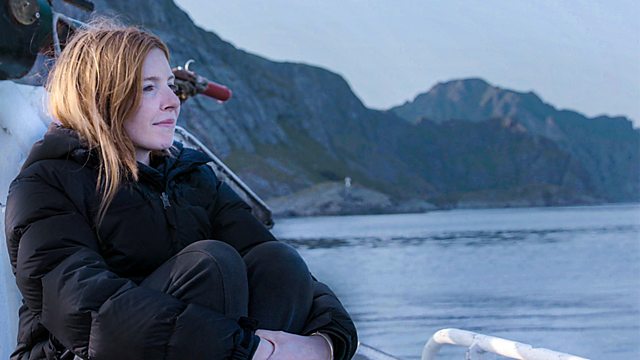The Whale Hunters
Investigating the controversial world of whale hunting, Stacey witnesses a commercial whale kill and meets the Faroese who kill for food and the activists trying to stop them.
Stacey Dooley investigates the controversial world of whale hunting. This contentious practice has hit the headlines around the world as whaling countries defy international pressure to ban the practice. Whalers argue it is just food, like any other meat. Campaigners call it barbaric and outdated. With rare access to a Norwegian commercial hunting vessel, Stacey witnesses the killing of a minke whale. And on the remote Faroe islands, modern-day hunters defend their tradition of whale slaughter for food, while activists from around the world say they will keep coming to the island until they stop.
Stacey heads to Norway, the world’s biggest commercial whaling nation. From the Lofoten Islands, off the country’s northern coast, Stacey joins skipper Bjorn and his crew on a minke whale hunt out to the Arctic Circle to fulfil an order from a local factory - each minke whale is worth around £7,000.
On the fourth day at sea, Stacey witnesses Bjorn track and kill a seven-metre-long, five-tonne minke whale with an explosive harpoon grenade. The minke is not considered under threat from extinction and therefore is lawful to hunt in Norway. For the whalers, it is straightforward - the minke provides food and a living. Bjorn suggests critics are urban people who don’t understand the laws of nature. According to a Norwegian report, the harpoon delivers instant death on impact in 82% of killings, but the remaining 18% can take an average of six minutes to die - for many, this is an unacceptable level of cruelty.
Stacey also travels to the Faroe Islands in the North Atlantic. The Faroese drive pods of pilot whales and white-sided dolphins to designated bays where they are slaughtered by hand. In this 1,000-year-old tradition known as the grind, the meat is not sold but given free to those involved in the hunt. Stacey talks to islanders who defend the killing as environmentally sustainable and culturally important - from the grind foreman Magnus, who leads the whale hunts and objects to outsiders telling them how to live, to Armgard, a 24-year-old student who wants to get her license to kill. They maintain that the killing is instant and the animals are not in distress or pain during the grind.
Stacey is shown dramatic footage of a recentgrind shot by British Sea Shepherd campaigner Sarah, who streamed the graphic images for the world to see. She argues that boats driving a pod of pilot whales to shore during a grind can take hours, leaving the mammals confused and disorientated. They believe the killing is inhumane and unregulated and cannot be justified because of tradition. Stacey questions a government official about the method of killing the whales and dolphins.
Stacey is faced with highly charged and passionate people on both sides of the argument and a whole host of cultural differences as she searches for answers to whetehr there still a place for whale hunting in today’s world.
Last on
More episodes
Credits
| Role | Contributor |
|---|---|
| Presenter | Stacey Dooley |
| Executive Producer | Nav Raman |
| Director | Josh Baker |
| Producer | Ali Quirk |
| Editor | Daniel Garcia-Robles |
| Producer | Ali Quirk |
| Production Manager | Laura Watts |
| On-line editing | Ross Copeland |
| Assistant Producer | Daisy Squires |
| Production Company | Chatterbox Media |
Broadcast
- Sun 3 May 2020 21:00
Featured in...
![]()
Stacey Dooley
A selection of Stacey Dooley's documentaries.


